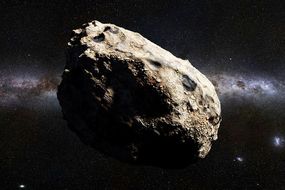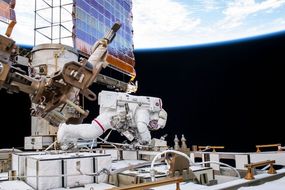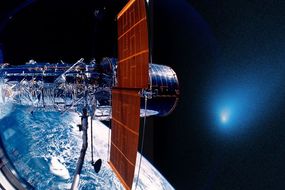Water on the Moon breakthrough: Astronomers spy young ice in the Moon’s South Pole craters – Express.co.uk
ASTRONOMERS have discovered sources of young ice on the lunar South Pole, hinting at a new source of water on the Moon.
Water on the Moon is found around the South Pole where deep impact craters are shrouded in permanent darkness. Until recently, astronomers believed the water was left behind by water-bearing comets and volcanic activity billions of years ago. Satellite data collected by NASA, however, has uncovered younger-looking deposits of ice in smaller craters.
The “surprising” discovery suggests there are unknown processes through which water makes its way to the Moon.
The breakthrough was made by astronomers at Brown University in Providence, Rhode Island, in the US.
Graduate student Ariel Deutsch who led the study said: “That was a surprise. There hadn’t really been any observations of ice in younger cold traps before.”
Ms Deutsch and her colleagues studied photos snapped by NASA’s Lunar Reconnaissance Orbiter (LRO), which has been photographing the Moon since 2009.
READ MORE: NASA Cassini satellite captures 5 of Saturn’s moons
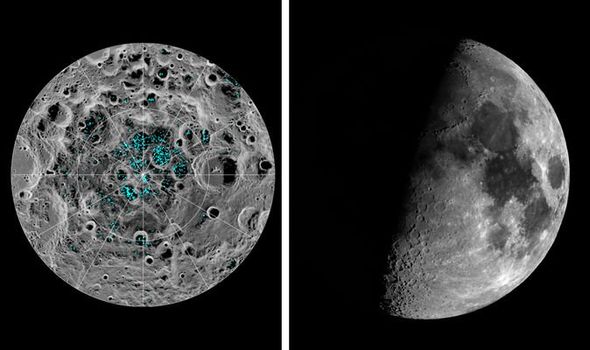
Water on the Moon: Astronomers have found relatively young ice water on the Moon (Image: NASA)

Water on the Moon: Craters on the South Pole are shrouded in permanent darkness (Image: NASA)
READ MORE
-

Humans should leave ‘sinking ship’ Earth and move to SPACE – expert
The researchers used visual cues to date ancient impact craters as old as 3.1 billion years.
Because the ice deposits contained within cannot be older than the craters, the researchers had an approximate idea of the ice’s age.
Millions of years of small meteorite impacts have also rendered the deposits rougher and more jagged.
But in a twist of events, the researchers found smaller impact craters were home to sharper and more well-defined ice deposits.
This ice appears to be much younger and the team at Brown is yet to discover how it formed.
There hadn’t really been any observations of ice in younger cold traps before
Because of the Moon’s position, sunlight never reaches many of the craters on the South Pole, which prevents the ice from melting and evaporating.
Ms Deutsch said: “The ages of these deposits can potentially tell us something about the origin of the ice, which helps us understand the sources and distribution of water in the inner solar system.
“For exploration purposes, we need to understand the lateral and vertical distributions of these deposits to figure out how best to access them.
DON’T MISS
Space shock as ‘unidentified object’ feeding a mysterious black hole [PICTURES]
Alien life boost: Mankind on brink of historic contact, says scientist [ANALYSIS]
Asteroid shock: ‘Clock is ticking’ human race must leave Earth [INTERVIEW]
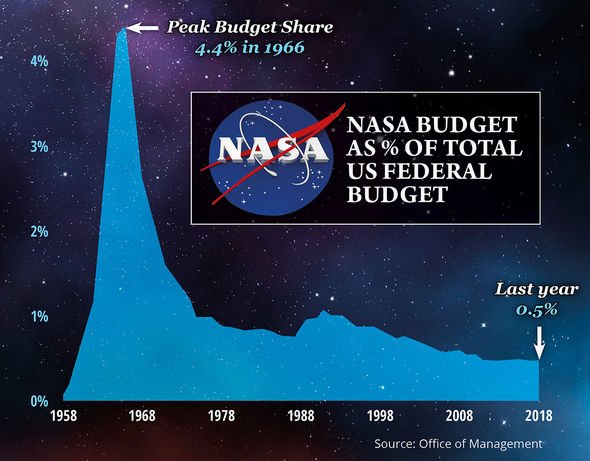
Water on the Moon: Percentage of NASA’s budget over the years (Image: EXPRESS)
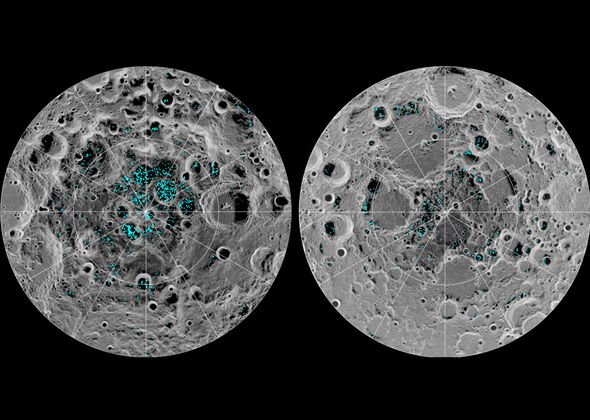
Water on the Moon: NASA will explore the South Pole with astronauts in 2024 (Image: NASA)
READ MORE
-

NASA shock: Scientist makes stunning confession of life on mars
“These distributions evolve with time, so having an idea of the age is important.”
The discovery of water on the Moon’s South Pole is a critical element of NASA’s upcoming Artemis Moon landing programme.
Artemis will send the next man and first woman to the surface of the Moon in 2024.
The US space agency will focus its efforts on the South Pole.
Having access to the valuable resource that is water, will help future colonists find a firm footing on the Moon’s surface.
Access to water can also aid in the reproduction of resources such as fuel.
Professor Jim Head from Brown said: “When we think about sending humans back to the Moon for long-term exploration, we need to know what resources are there that we can count on, and we currently don’t know.
“Studies like this one help us make predictions about where we need to go to answer those questions.”
